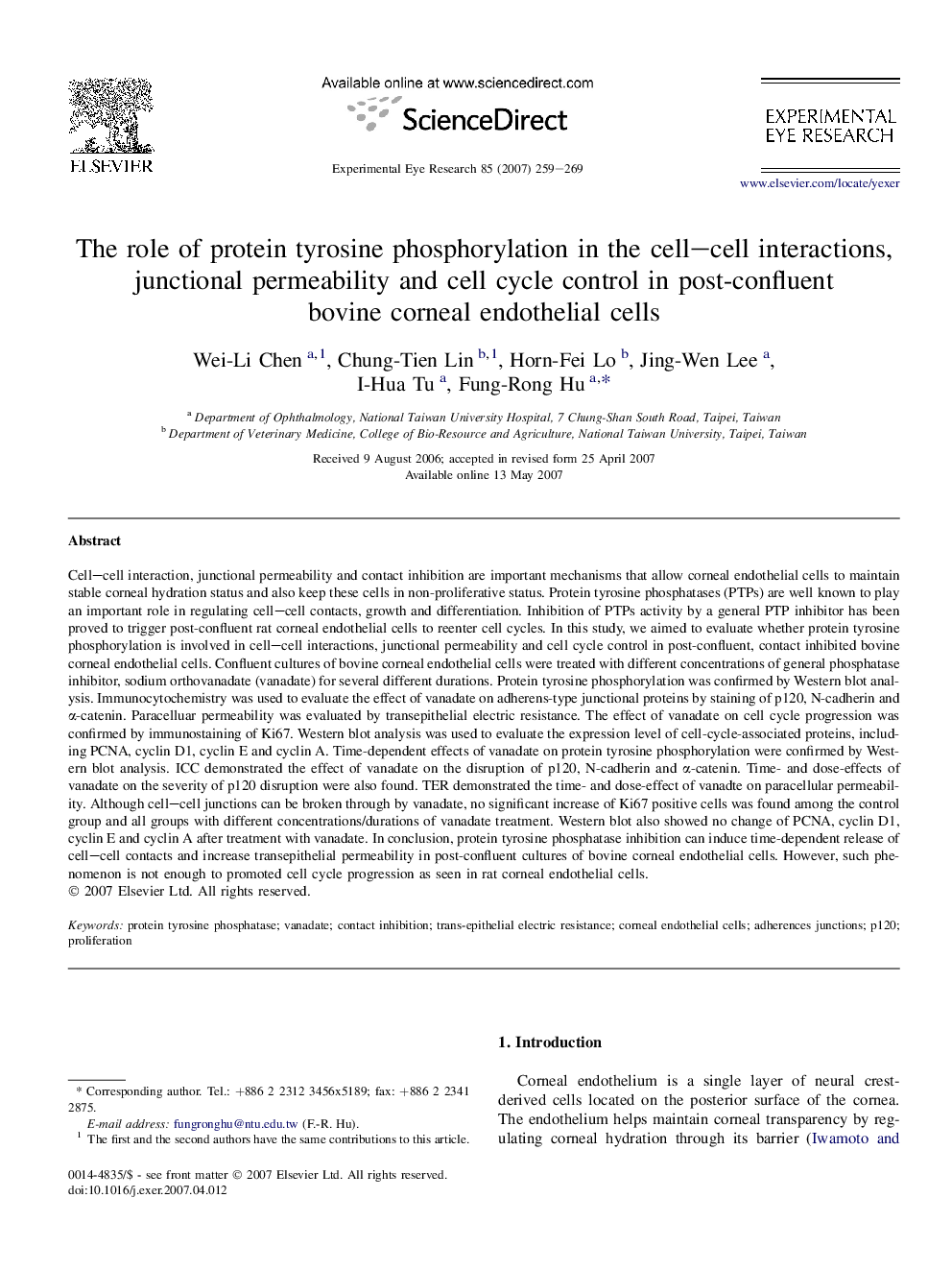| کد مقاله | کد نشریه | سال انتشار | مقاله انگلیسی | نسخه تمام متن |
|---|---|---|---|---|
| 4012263 | 1261186 | 2007 | 11 صفحه PDF | دانلود رایگان |

Cell–cell interaction, junctional permeability and contact inhibition are important mechanisms that allow corneal endothelial cells to maintain stable corneal hydration status and also keep these cells in non-proliferative status. Protein tyrosine phosphatases (PTPs) are well known to play an important role in regulating cell–cell contacts, growth and differentiation. Inhibition of PTPs activity by a general PTP inhibitor has been proved to trigger post-confluent rat corneal endothelial cells to reenter cell cycles. In this study, we aimed to evaluate whether protein tyrosine phosphorylation is involved in cell–cell interactions, junctional permeability and cell cycle control in post-confluent, contact inhibited bovine corneal endothelial cells. Confluent cultures of bovine corneal endothelial cells were treated with different concentrations of general phosphatase inhibitor, sodium orthovanadate (vanadate) for several different durations. Protein tyrosine phosphorylation was confirmed by Western blot analysis. Immunocytochemistry was used to evaluate the effect of vanadate on adherens-type junctional proteins by staining of p120, N-cadherin and α-catenin. Paracelluar permeability was evaluated by transepithelial electric resistance. The effect of vanadate on cell cycle progression was confirmed by immunostaining of Ki67. Western blot analysis was used to evaluate the expression level of cell-cycle-associated proteins, including PCNA, cyclin D1, cyclin E and cyclin A. Time-dependent effects of vanadate on protein tyrosine phosphorylation were confirmed by Western blot analysis. ICC demonstrated the effect of vanadate on the disruption of p120, N-cadherin and α-catenin. Time- and dose-effects of vanadate on the severity of p120 disruption were also found. TER demonstrated the time- and dose-effect of vanadte on paracellular permeability. Although cell–cell junctions can be broken through by vanadate, no significant increase of Ki67 positive cells was found among the control group and all groups with different concentrations/durations of vanadate treatment. Western blot also showed no change of PCNA, cyclin D1, cyclin E and cyclin A after treatment with vanadate. In conclusion, protein tyrosine phosphatase inhibition can induce time-dependent release of cell–cell contacts and increase transepithelial permeability in post-confluent cultures of bovine corneal endothelial cells. However, such phenomenon is not enough to promoted cell cycle progression as seen in rat corneal endothelial cells.
Journal: Experimental Eye Research - Volume 85, Issue 2, August 2007, Pages 259–269